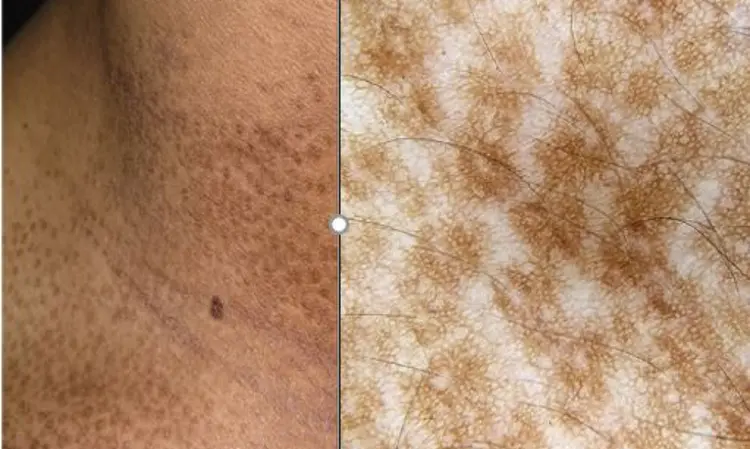- Home
- Medical news & Guidelines
- Anesthesiology
- Cardiology and CTVS
- Critical Care
- Dentistry
- Dermatology
- Diabetes and Endocrinology
- ENT
- Gastroenterology
- Medicine
- Nephrology
- Neurology
- Obstretics-Gynaecology
- Oncology
- Ophthalmology
- Orthopaedics
- Pediatrics-Neonatology
- Psychiatry
- Pulmonology
- Radiology
- Surgery
- Urology
- Laboratory Medicine
- Diet
- Nursing
- Paramedical
- Physiotherapy
- Health news
- Fact Check
- Bone Health Fact Check
- Brain Health Fact Check
- Cancer Related Fact Check
- Child Care Fact Check
- Dental and oral health fact check
- Diabetes and metabolic health fact check
- Diet and Nutrition Fact Check
- Eye and ENT Care Fact Check
- Fitness fact check
- Gut health fact check
- Heart health fact check
- Kidney health fact check
- Medical education fact check
- Men's health fact check
- Respiratory fact check
- Skin and hair care fact check
- Vaccine and Immunization fact check
- Women's health fact check
- AYUSH
- State News
- Andaman and Nicobar Islands
- Andhra Pradesh
- Arunachal Pradesh
- Assam
- Bihar
- Chandigarh
- Chattisgarh
- Dadra and Nagar Haveli
- Daman and Diu
- Delhi
- Goa
- Gujarat
- Haryana
- Himachal Pradesh
- Jammu & Kashmir
- Jharkhand
- Karnataka
- Kerala
- Ladakh
- Lakshadweep
- Madhya Pradesh
- Maharashtra
- Manipur
- Meghalaya
- Mizoram
- Nagaland
- Odisha
- Puducherry
- Punjab
- Rajasthan
- Sikkim
- Tamil Nadu
- Telangana
- Tripura
- Uttar Pradesh
- Uttrakhand
- West Bengal
- Medical Education
- Industry
Case of Rare follicular variant of Becker's nevus reported

Source- Ranglani H, Malakar S. Clinical and Dermoscopic Features of Follicular Becker's Nevus: A Rare Variant. Indian Dermatol Online J. 2021 Aug 21;12(5):750-751. doi: 10.4103/idoj.IDOJ_877_20. PMID: 34667764; PMCID: PMC8456253.
Follicular Becker's Nevus: A Rare Variant - Becker's nevus is a cutaneous hamartoma, characterized by the presence of hyperpigmentation, hypertrichosis, and smooth muscle proliferation. Recently a report describing a rare follicular variant of Becker's nevus was published in the Indian Dermatology Online Journal.
An 18‑year‑old man presented with multiple asymptomatic well‑defined, folliculocentric macules tending to coalesce at one side over the right chest and supraclavicular area since 1.5 years which was gradually progressive in nature. There was no history of seizures, developmental delay or any other neurological complaints associated with the lesion. The patch had terminal hair in at the centre of each hyperpigmented macule without any skin thickening or nodularity. There was no evidence of limb or breast hypoplasia or asymmetry.
Dermoscopy (Dermlite DL200 Hybrid M; polarized mode) showed a well‑defined network‑like pigmentation with immediate perifollicular hypopigmentation and well‑defined areas of darker pigment network surrounding these areas. Histopathology demonstrated hyperpigmentation of the basal layer and regular acanthosis with no evidence of dermal smooth muscle proliferation. Thus, a final diagnosis of follicular Becker's nevus was made. The patient was counselled about the nature of the condition and advised treatment with Q‑switched ND-YAG laser in higher centres.
Becker's nevus is a cutaneous hamartoma exact etiology of which is unknown. Beta‑actin (ACTB) mutations amplify Hedgehog signaling leading to interference with the development of hair follicles and arrector pili muscles explaining perifollicular arrangement of macules. Androgens play a role in this condition as seen by peri‑pubertal development, hypertrichosis, acneiform lesions in the involved area, and hypertrichosis, with an increase in androgen receptors in the involved skin noted.
Several morphological variants of Becker's nevus have been reported including the presence of only pigmentation (Becker' melanosis), giant Becker's nevus, blaschkoid Becker's nevus, bilateral involvement, and presence of multiple lesions. Becker's nevus syndrome is an association of Becker's nevus with unilateral breast hypoplasia and muscle, skin, and/or skeletal abnormalities.
It is suggested by the authors that the presence of folliculocentric macules points to an causative role of the follicular epithelium. In contrast to the dermoscopy of classical Becker's nevus in which a continuous sheet of pigmentation is seen, islands of pigmentation are seen in the case of follicular Becker's nevus. It can often pose a diagnostic conundrum, being misdiagnosed as pityriasis versicolor.
To conclude it is of importance that follicular variant of Becker's nevus is rare but can present as early and evolving lesions of Becker's nevus and lack of scaling and unilateral location along with the dermoscopic findings can help differentiate the lesion from pityriasis versicolor.
Source- Ranglani H, Malakar S. Clinical and Dermoscopic Features of Follicular Becker's Nevus: A Rare Variant. Indian Dermatol Online J. 2021 Aug 21;12(5):750-751. doi: 10.4103/idoj.IDOJ_877_20. PMID: 34667764; PMCID: PMC8456253.
MBBS
Dr Manoj Kumar Nayak has completed his M.B.B.S. from the prestigious institute Bangalore medical college and research institute, Bengaluru. He completed his M.D. Dermatology from AIIMS Rishikesh. He is actively involved in the field of dermatology with special interests in vitiligo, immunobullous disorders, psoriasis and procedural dermatology. His continued interest in academics and recent developments serves as an inspiration to work with medical dialogues.He can be contacted at editorial@medicaldialogues.in.
Dr Kamal Kant Kohli-MBBS, DTCD- a chest specialist with more than 30 years of practice and a flair for writing clinical articles, Dr Kamal Kant Kohli joined Medical Dialogues as a Chief Editor of Medical News. Besides writing articles, as an editor, he proofreads and verifies all the medical content published on Medical Dialogues including those coming from journals, studies,medical conferences,guidelines etc. Email: drkohli@medicaldialogues.in. Contact no. 011-43720751


